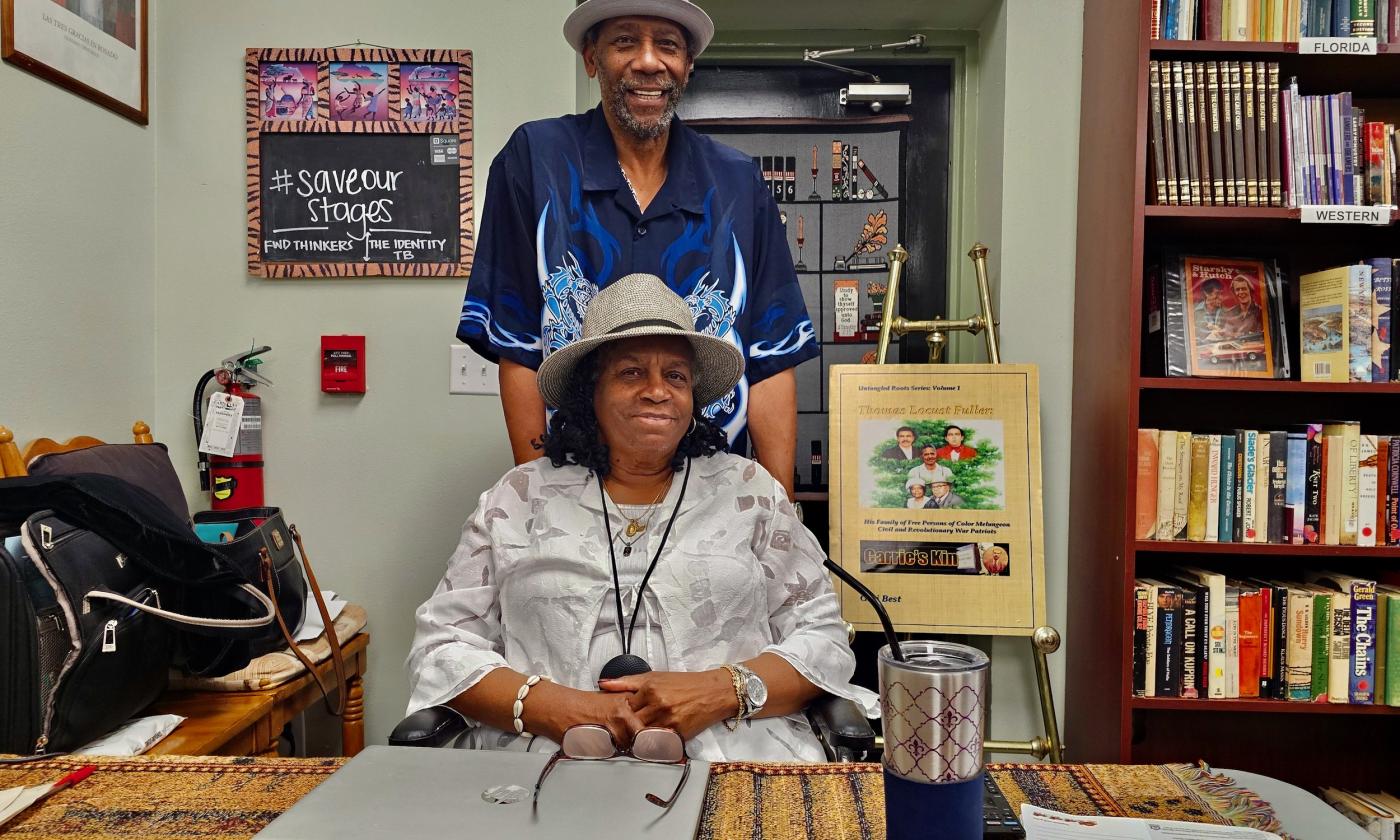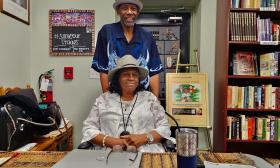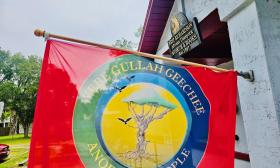
Gullah Geechee Legacy: A Historian's Insights into History and Heritage
Local historian illuminates the enduring legacy of enslaved Africans.
Gullah Geechee Legacy: A Historian's Insights into History and Heritage
A Recognized National Historic Area
On October 12, 2006, Congress passed the S.203 National Heritage Areas Act of 2006, formally acknowledging the historical and cultural importance of the Gullah Geechee nation. The Gullah Geechee Heritage Corridor encompasses 12,000 square miles.
Managed by the U.S. National Park Service, the Gullah Geechee Cultural Heritage Corridor's purpose is to:
Preserve, share and interpret the history, traditional cultural practices, heritage sites, and natural resources associated with the Gullah Geechee people [...]
With a coastal territory spanning from Jacksonville North Carolina to Jacksonville Florida, the Corridor is the homeland of a unique Creole culture whose earliest generations were enslaved in British Carolina.
St. Augustine, Florida is currently considered the southernmost region of the Heritage Corridor. (Though, some are rallying for its borders to be extended all the way to Key West.)
Life Work Inspired By Those That Came Before
Gigi Best-Richardson became interested in African American History in undergraduate school. There, she was introduced to African American authors, some of whom had their books banned by contemporary society.
Best-Richardson believes works by author and anthropologist Zora Neale Hurston should receive more recognition.
"Hurston wrote in dialect a lot, which wasn't appreciated, "Best-Richardson states. "The publishers felt that because Hurston was speaking in dialect that was making people of African descent appear uneducated. That wasn't the case. In many ways, she was honoring them. "
While visiting the Africatown Museum just outside of Mobile, Alabama, she learned the story of Kossula, an enslaved man who inspired Zora Neale Hurston's book Barracoon: The Story of the Last 'Black Cargo. This particular book from Hurston is important to Best-Richardson, who believes in the importance of preserving traditions and the stories of those who experienced the harsh realities of slavery.
"After 1820, enslavers were forbidden to bring individuals straight from Africa, "Best-Richardson said. "And so, during that period, a great many kidnappings occurred with enslaved people and many free people of color. Enslaver took Kossula from Africa with 110 people and then burned the ship, thinking that nobody would ever be able to find it."
Despite attempts to conceal the story of the last slave ship, Hurston succeeded in documenting Kossula's tale, recording his voice and narrative, thus preserving a unique testament to a hidden history.
Gigi Best-Richarsson has dedicated her life to bringing awareness to Black authors like Hurston and highlighting experiences like Kossula's.
The Best-Richardson Story
Since 1997, Best-Richardson and her spouse and co-owner, Skip Richardson, have been a rare book dealer.
They began a bookstore in Virginia Beach while working for the federal government. When assigned overseas, she brought her business along, collecting books on the African Diaspora and sharing them with the public.
In 2018, Richardson and her husband established a nonprofit organization that includes a museum and a bookstore.
"We were on a military base in Korea and Turkey, "Richardson states. "So, we took some books with us and set up a little bookstore in our house so people would come over to pick out books. When there were special celebrations including Women's History Month or African American History Month, we would have a table set up to sell books that way."
Currently, Best-Richardson provides a unique collection at the BRADLC Museum in St. Augustine, FL, which includes cultural books and art.
"In our museum, we have a first edition of Up From Slavery, printed in 1901, "Best-Richardson said. "We have many books from the Harlem Renaissance, one of our favorite genres. Then also, we have Gullah Geechee books that study the culture, the food, and the history of the Gullah."
Highlighting the Gullah Geechee People at BRADLC
The BRADLC Museum highlights the contributions of the Gullah Geechee people. "Some people say, well, the Africans didn't bring anything with them," Best-Richardson said. "The Gullah Geechee brought the rice culture from Sierra Leone."
The Gullah Geechee are also very skilled craftspeople. "The whole basket-making culture comes from Sierra Leone and is used by women in Charleston, "Richardson said. "After a visit to Sierra Leone from a Gullah basket weaving people in the Low Country, South Carolina, they realized that their language is similar, and the baskets look almost identical."
With traditions that have endured for over 400 years, descendants of the Gullah Geechee Nation continue to honor their ancestors through stories, songs, art, and other creative expressions. They also pay homage by preserving land and historic sites connected to the African diaspora.
Charleston Artist Philip Simmons
Among the Gullah Geechee collection, Richardson highlights one of her favorite books, which comes from South Carolina.
"There's a gentleman who was a blacksmith, who fashioned many of the wrought iron gates in Charleston, "Best-Richardson states. "So when you go to Charleston and see wrought iron gates, the creator is most likely, Philip Simmons."
With works displayed in the Lowcountry, as well as in Europe and Asia, Simmons demonstrates everyday objects can be art. He worked in the blacksmith profession for 78 years, with pieces exhibited at the Smithsonian Museum.
The Tragedy and Triumph of the Gullah Geechee Nation
With ancestors among the Forgotten Patriots—the Indigenous and Afro-Indigenous who fought in the Revolutionary War—and as a member of the Gullah Geechee Nation, Best-Richardson is passionate about educating the public about her ancestors. The Gullah Geechee culture is rich with traditions and contains many triumphant stories.
However, Richardson points out that the Gullah Geechee people still face many challenges.
Egbo Landing
A narrative cherished by Best-Richardson, intimately tied to the Gullah Geechee culture, stems from the tale of ancestors originating from Angola. Among them were individuals of Ebo descent, recognized as Nigerian. This narrative traces back to Igbo, currently called the Egbo Landing, on St. Simons Island in South Carolina.
"There is a story about Africans brought to St. Simons Island in that area, "Best-Richardson said. "And they had been mistreated on the ship. So what they did was, after taking over Saver’s ship they grabbed each other's hands, walked into the water, and drowned themselves. And so it touches my heart so much, it says, before, I'll be a slave, I'll be buried in my grave. And I can't listen to that song without shedding tears to think that, these people were stolen from their land and bought here."
Current Day Struggles
"The trials and tribulations that they're going through now, where people are trying to steal their land, has been going on for a while," Best-Richardson states. "So there are certain sections in South Carolina and Georgia, where costly private communities are being built and basket makers are cut off from the land where they collected sweet grass along the roads."
"After the Emancipation, companies started building power plants [throughout the Lowcountry]. And they're building these plants and these chemical factories are right where people were enslaved. But the tragedy is a lot of people of African descent were poisoned."
Despite such narratives and others recounting the trials endured by ancestors and members of the Gullah Geechee people, Best-Richardson maintains optimism about the future of their nation and its cultural traditions.
"They (descendants of the enslaved) fought to get the Gullah Geechee corridor, which stretches from Wilmington, North Carolina to St. Augustine, "Best-Richardson said. "So that whole corridor is being celebrated, and some committees and people are trying to save some land, you know."
Cultural Memories of the Gullah Geechee
When reflecting on notable figures from the Gullah Geechee culture, Best-Richardson highlights the MacIntosh Ring Shouters, one of many Gullah Ring Shouting groups.
Ring Shouting is more than mere entertainment; it is a form of worship deeply rooted in West African Culture, comprising singing, dancing, and instrumentals.
Spectators of Ring Shouting are drawn into the Ring Shout's circular movement and are invited to participate. Best-Richardson recounts her first encounter with the Shouters as a child.
"The first time I saw my grandmother shout, I didn't know what she was doing," she states. "And I was crying. I was like five years old. And I didn't know I was afraid. So, the ground and the floors were shaking as they were shouting. And so this ring shout expresses how some enslaved people, like on Sundays when they had if they had free time, would do this ring shout."
Visiting the BRADLC
Gigi Best-Richardson credits Visit St. Augustine and the Ximenez-Fatio House Museum for helping to provide information about African American history and informing the public about programs and tours available within the BRADLC Museum.
Artifacts from the Gullah Geechee culture owned by Best-Richardson are showcased and some are sold at the BRADLC Museum alongside a selection of banned books, scholarly works, and literary classics.
The St. Augustine Black History App
Created in collaboration between Visit St. Augustine and Florida's Historic Coast, this resource brings history to the palm of your hand. Our mission is to connect the locals and visitors of today to significant stories of St. Augustine's African American History.
It is available for free on the Apple App Store and Google Play Store: St. Agustine Black History App Download Link.
Resources
Online Sources
Best Richardson African Diaspora Literature & Culture Museum
Official Website
Further Reading
Barracoon: The Story of the Last "Black Cargo, by Zora Neale Hurston



